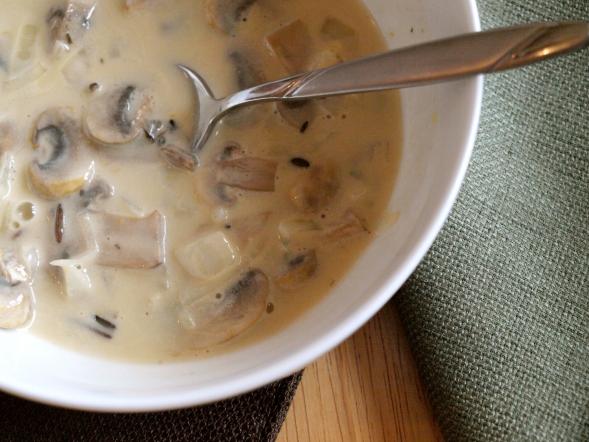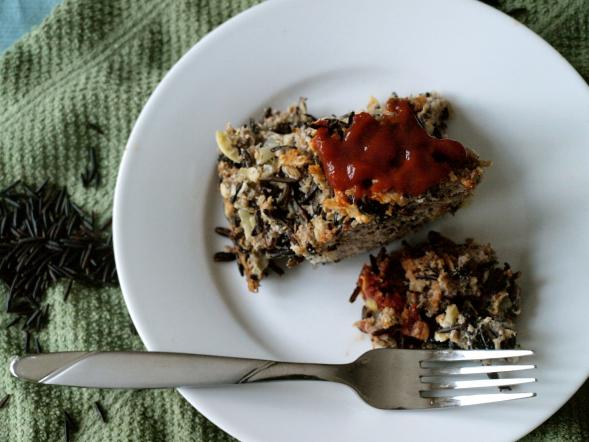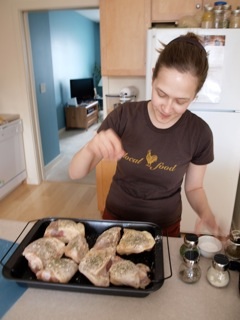This is the ninth post in the series Great Grains, highlighting unusual whole grains and easy ways to incorporate them into your diet. Check out posts on bulgur, millet and rye as well.
No Minnesotan could make an honest study in whole grains without including wild rice. It’s about as iconic as the North Shore and pond hockey around here. In fact, it’s our official state grain.
But as much as we Minnesotans love a pile of steamy wild rice pilaf next to our walleye fish fry, most of us know little about the grain itself. I’ve been cooking and enjoying wild rice for years, but I’ve learned more in the past few weeks about harvesting and preparing it than I ever knew. From the genetics and agronomy research at the University of Minnesota to the traditional wild rice gatherer I found up the street from my house in St. Paul, there’s a lot more to this whole grain than just what’s on our plates.

What is wild rice?
Although wild rice is classified as a whole grain, it’s much different than grains like wheat, barley, and rye. Wild rice is a semi-aquatic plant, one that needs both water and nutrients to survive. It loves northern Minnesota and the Upper Great Lakes region specifically because of the number of lakes, river beds, and marshy areas; however, it has also been found growing naturally in a majority of the United States.
Wild rice needs 2-4 feet of water to survive. Too much water and the seed doesn’t receive enough sunlight, too little and the stalk and roots risk damage from the elements. This specificity means that some years yield huge harvests, other years the crop struggles to thrive. It’s a tedious, low-yield, and high-intensive crop to grow, making it one of the more expensive grains in the supermarket.
Minnesotans are familiar with the shallow canoes used to harvest wild rice naturally in the months of August and September. By law in Minnesota, gatherers must use the same traditional Native American methods for harvesting that have been used for hundreds of years in the state.
 Mushroom and Wild Rice Soup (Recipe Below)
Mushroom and Wild Rice Soup (Recipe Below)
What’s great about it?
Beyond the rich history of cultivation in Minnesota, wild rice has some nutritional perks, too. It’s higher in protein that other grains and has recently been studied for antioxidant value. It’s also rich in B vitamins, gluten free, and has nearly twice the amount of fiber as brown rice.
Wild rice is often recommended as a carbohydrate in weight loss programs because the higher protein content fills you up faster with fewer calories than brown rice.

Where can I find it?
Wild rice can be found in nearly every grocery store, gas station, and gift shop in Northern Minnesota. After harvest it’s “graded” into size and quality of the grain, and the final grade can largely influence price. You’re likely to pay a premium for traditionally harvested wild rice because of the labor necessary for harvest, but it also ensures the grain was harvested in the same manner our Native American ancestors intended.
 Wild Rice Meatloaf (Recipe Below)
Wild Rice Meatloaf (Recipe Below)
I found it, now what do I do with it?
Wild rice is simple to prepare if given the right amount of time. Place the rice in a large pot and cover with about 1” of water. Traditionally harvested and commercial wild rice have differing boiling times (25-30 min. for traditional and up to 1 hour for commercial) so be sure to check ahead before starting your recipe.
Below you’ll find suggestions for some Minnesota stand-by recipes, as well as some unique and fresh ways to give wild rice a try:
- Mushroom and Wild Rice Soup (pictured above) – Try this Minnesota staple with or without chicken added. Sauté onions and mushrooms in butter. Add vegetable broth and 1 cup of cooked wild rice. Simmer, add 2 cups of half and half and fresh parsley.
- Wild Rice Meatloaf (pictured above) – Mix in 1 cup of cooked wild rice per 1 pound of ground beef. Add in your favorite meatloaf ingredients (onion, green pepper, horseradish, ketchup, etc.) and bake.
- Wild Rice Stuffing – Stuff a turkey with a mixture of 1 cup cooked wild rice and 1 cup brown rice cooked with cranberries, mushrooms, and carrots for a gluten-free stuffing alternative.
- Fried Rice – Use 2 cups of cooked wild rice in place of brown or white rice in any traditional fried rice recipe. Sauté in a large wok with vegetables, eggs, and ¼ cup of extra water or broth.
- Turkey Wild Rice Salad with Grapes – Combine 4 cups of cooked wild rice with 2 cups cubed cooked turkey. Add onions, cashews, and halved green grapes. Try a dressing combination with mayo, lemon juice, yogurt, honey, or ginger.
- Wild Rice Blueberry Muffins – Add 1-2 cups of cooked wild rice (buy wild rice pieces or Grace C wild rice for better muffin texture) to any homemade blueberry muffin recipe for extra nutty flavor and fiber.
- Wild Rice Quiche – Combine 1 ½ cups of cooked wild rice with spinach, leeks, light cream, and walnuts with well-beaten eggs. Pour mixture into a 9-inch pie crust and bake for a perfect main-course brunch dish.
- Cranberry Wild Rice Cookies – Add 1 ½ cups of cooked wild rice and 1 cup of dried cranberries for a chewy, nutty cookie. The wild rice takes the place of oatmeal for added texture, flavor, and fiber.

Amy Sippl is a frequent contributor to Simple, Good, and Tasty. She grew up in rural Wisconsin, but now calls St. Paul her home. She writes about her successes and struggles to eat and grow local food on her blog: Minnesota Locavore. Her last post for us was Co-op on a Budget: Winter Eating for Locavores.

